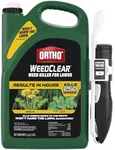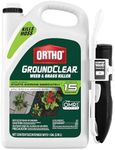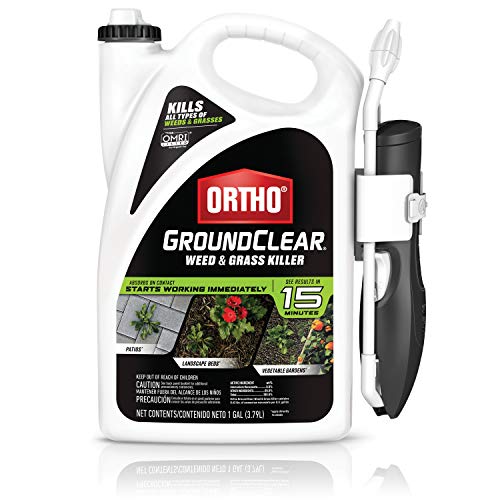Buying Guide for the Best Safe Weed And Grass Killer
Choosing the right weed and grass killer can be a daunting task, especially if you want to ensure it's safe for your garden, pets, and family. The key is to understand the different specifications and how they align with your needs. Here’s a guide to help you navigate through the essential specs and make an informed decision.Active IngredientsActive ingredients are the chemicals responsible for killing weeds and grass. This spec is crucial because it determines the effectiveness and safety of the product. Common active ingredients include glyphosate, which is effective but controversial, and natural alternatives like vinegar or citric acid. If you have pets or children, you might prefer products with natural ingredients. For tougher weeds, stronger chemicals might be necessary, but always consider the safety implications.
SelectivitySelectivity refers to whether the weed killer targets only specific plants or all vegetation. Non-selective weed killers will kill any plant they come into contact with, making them ideal for clearing large areas. Selective weed killers target specific types of weeds, which is useful for maintaining lawns or gardens without harming desired plants. Choose non-selective if you need to clear everything, and selective if you want to preserve certain plants.
Application MethodThe application method can vary from sprays, granules, to concentrates that need to be mixed with water. This spec is important because it affects ease of use and coverage area. Sprays are convenient for small areas and spot treatments, granules are good for larger areas, and concentrates are cost-effective for extensive use. Consider the size of the area you need to treat and your comfort with mixing solutions when choosing the application method.
RainfastnessRainfastness indicates how long the product needs to be on the weeds before it becomes resistant to being washed away by rain. This is important for ensuring the effectiveness of the treatment. Products with shorter rainfast periods are more convenient in unpredictable weather. If you live in an area with frequent rain, look for a product with a rainfast period of 30 minutes to an hour. For drier climates, this may be less of a concern.
Safety for Pets and ChildrenSafety for pets and children is a critical spec if you have a family or animals that frequent the treated area. This spec ensures that the product won't harm your loved ones. Look for labels that specifically mention pet and child safety, and consider natural or organic options. If safety is a top priority, choose products that are certified safe for pets and children, even if they might be less potent.
Environmental ImpactEnvironmental impact refers to how the product affects the surrounding ecosystem, including soil health and water sources. This spec is important for sustainable gardening practices. Products with low environmental impact are usually biodegradable and free from harmful chemicals. If you are environmentally conscious, opt for products labeled as eco-friendly or organic. For those less concerned, traditional chemicals might offer quicker results but at a higher environmental cost.
Residual ActivityResidual activity indicates how long the product remains active in the soil after application. This is important for long-term weed control but can affect future planting. Products with longer residual activity provide extended weed control but may prevent new plants from growing. If you plan to replant soon, choose a product with short residual activity. For long-term weed prevention, longer residual activity is beneficial.





















